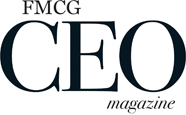Andrew Wardlaw pinpoints ways to boost unplanned instore buying during turbulent times
In recent months, manufacturers of consumer-packaged goods (CPG) have revealed exceptional gains in value sales – boosted by inflation led price hikes. However, more often than not, this fanfare has concealed a different story – one where volume sales are in retreat. Indeed, Nielsen IQ has calculated a one percent decline in global CPG volume sales across 2023, and in the UK, The Grocer magazine revealed that 80 percent of CPG categories have experienced volume declines in the same period.
But what if these volume declines are not simply the result of higher prices? What if there is something more profound and long-lasting going on? In this article, I speculate whether falling volumes might be a factor of shoppers buying less ‘on impulse’ – those unplanned purchases that we give much less thought to.
To substantiate, let’s examine a range of dynamics that could inhibit impulsive behaviour in store. Taken together, they make for sobering reading.

Drag factors
The most obvious drag on impulse buying continues to be inflation, with shoppers ditching non-essential purchases to offset rises in the cost of living. But with inflation now falling, one might speculate that impulsive buying will recover. However, I think this is a dangerous assumption to make. For one thing, the last few years has nurtured a frugal mindset that is likely to flourish well into the future. The fact is, many consumers will have realised they can happily get by, through consuming less. Any ‘recovery’ in spending patterns is likely to be slow.
Looming large, the second dynamic exerting downward pressure on impulsive behaviour is more intentional living. This widely reported mega-trend acknowledges an expansion of purposeful consumption: from Gen Z’s lead on consumer activism, to other goal-directed pursuits such as self-care, sustainability, and even self-expression. It stands to reason that increases in deliberate, intentional consumption leaves less room for spontaneity. To prevent being left behind, manufacturers are encouraged to explore ways in which their offer can feel more intentional.
A hindrance is the continuing fall in campaign effectiveness, resulting from a fragmenting media environment. Less exposure to advertising surely weakens impulsive behaviour among mass audiences, given that people are more likely to trial a new product if they have some prior awareness of it.
Meanwhile, regulatory pressure, such as measures curbing the promotion of products high in fat, salt, and sugar (HFSS) is relegating many impulsive lines to less prominent positions in supermarkets. Further ‘attacks’ on such products look likely as the debate on ultra-high processed food builds, which suggests that over time many companies’ portfolios will simply become much less ‘craveable’ by consumers. Over in the US, The New York Times has suggested that ‘craveable’ could lose its selling power as the ‘Ozempic Era’ builds, referring to a new class of drug that suppresses hunger and poses ‘an existential threat to the processed food industry.’ Trials of Ozempic have proved successful and the impact of planned rollouts can only reduce impulsive behaviour. Such rollouts may not be limited to American soil.
And another macro shift that spells doom for impulsive behavior relates to the unstoppable success of online groceries. The fact is, in online environments, people are required to make purchase decisions with only a fraction of the sensory information that’s available in store, and this tends to make an online shopper less confident. It’s a situation that has led some CEOs like Mark Clouse of Campbell’s to ask, ‘how do you create that impulsive dynamic in an online world?’ It’s one more question that our industry will need to think outside of the box to address.
What brands can do?
So, let’s consider some of the ways in which companies can respond to responsibly generate upticks in unplanned buying.
Despite multiple factors exerting downward pressure, one very large promoter of impulsive buying behaviour is the YOLO economy. This concept acknowledges that many consumers are choosing to respond to this era of serial crisis by deprioritising the future and living in the moment more. For example, last summer McKinsey found that 44 percent of consumers across 10 geographies were planning to ‘splurge’.
For manufacturers, limited editions, unexpected brand collaborations and ultimately joyful product experiences and can work wonders here. Recent impulsive fare has included Heinz’s pasta sauce collab with Absolut Vodka and Dunkin Donuts tie in with the Boston Brewing Company. Such launches also tap into the current FOMO phenomenon (Fear of Missing Out) which further promotes unplanned buys.

Ramping up on-shelf presence is a further tactic to consider, rethinking packaging so that it breaks category codes and infiltrates the low attention economy. This is something Juicy Marbles has done brilliantly in plant-based meat alternatives!
Responding to a rise in intention, brands can address by strengthening alignment with their target consumers’ core values. Mainstream brands such as Unilever’s Dove have been doing this for years, with its campaign for real beauty, and fledging beauty brands such as Alicia Keys’ are joining the party by adding life-affirming mantras across its packaging.
And to create a more impulsive dynamic online, creators are developing initiatives such as sensory-charged short form video which attempts to bridge the sensory gap and improve shopper confidence in digital environments.
Towards consumer-packaged entertainment
For CPG manufacturers in any category, development of impulsive innovation is clearly necessary if shareholder value is to be sustained in the longer term.
With Gen Z moving into pole position, I believe that manufacturers will need to pivot towards consumer-packaged entertainment to ensure that CPG categories compete hard in a world where TikTok sets the benchmark. Even Procter & Gamble concedes that product theatre, or in their own words ‘first-use wow’, is increasingly necessary to meet the expectations of modern consumers.
So, whether your selling cleaning fluid or canned soup, what can you do to make it more impulsive?
Andrew Wardlaw is Chief Ideas Officer at MMR Research Worldwide





